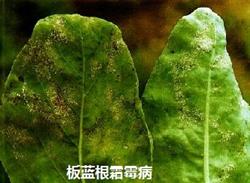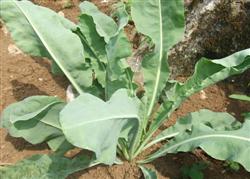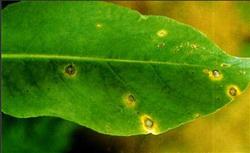Planting of Radix Isatidis: what are the diseases of Radix Isatidis in autumn?

What are the diseases of Radix Isatidis in autumn? Please introduce and control methods in autumn is the frequent occurrence period of Radix Isatidis diseases such as downy mildew, root rot, Sclerotinia sclerotiorum, etc., the following control methods for reference: downy mildew harms leaves. The leaves near the ground in the lower part of the plant fell ill first, and gradually spread to the upper leaves. At the initial stage of the disease, only gray-white frosty mildew appeared on the back of the leaves, the leaves had no obvious disease spots, and the damaged parts were uneven, which further developed into small green spots, then turned brown and withered, and in severe cases, the edges of the diseased leaves turned brown and withered until the whole leaf died. The disease is easy to occur when the field humidity is high and the temperature is high. Prevention and treatment methods ① open ditches and drainage in time after heavy rain to keep the furrows smooth; ② should remove the branches and leaves that are too dense to keep the field ventilated and transparent; at the initial stage of the onset of ③, spray the leaves with 1 ∶ 1 ∶ 100 solution or 50% carbendazim 800x solution, once every 7 days, for 4 times. Root rot harms the roots. At the time of occurrence, the fibrous root and the main root tip were damaged first, showing dark brown, until the vascular bundle of the root system showed brown pathological changes. In the later stage, the whole root rotted, the aboveground plant wilted, and finally withered. The disease is easy to occur in the middle and later stage of growth. Control method ① ploughing and topdressing applied more rotten organic fertilizer to enhance plant disease resistance; at the initial stage of ② disease, 5% lime milk was used to irrigate the disease hole once, and 50% Tuiyte 600x liquid was used to spray the disease area 1 times twice; ③ found the diseased plant, pulled it out in time, took it out of the field, burned it centrally or buried deeply. Sclerotinia sclerotiorum harms stems and leaves. At the beginning of the damage, the leaves were water-immersed bluish brown disease spots, and then the whole leaves rotted, leaving only veins. When the stem was damaged, the cortex rotted, the stem broke into hemp, covered with hyphae, black mouse fecal sclerotia inside and outside the stem and leaves, the sclerotia was the most at the base of the stem near the soil surface, and the whole plant withered and yellowed and died in the later stage. The disease is easy to occur in continuous cropping land and dry land. Control methods ① sowing rotation to reduce the spread of germs; ② weather drought should pay attention to timely watering, in the morning or evening is appropriate; the initial onset of ③ with 50% methyl thiophanate 800 times solution or 65% Daimen zinc 600 times solution spray stems and leaves, once every 5 days, spraying 3 times 4 times. Click to get more planting techniques of Radix Isatidis
- Prev

Planting of Radix Isatidis: how to manage it?
How to manage planting Radix Isatidis? Please introduce the daily management methods of Radix Isatidis: the daily management of Radix Isatidis mainly includes field management and pest control. Detailed methods can be referred to the following: field management method of Radix Isatidis: interseedling when seedling height 7~10cm, seedling height 12cm, plant spacing 7: 10.
- Next

Planting of Radix Isatidis: how to control diseases and pests of Radix Isatidis?
How to control diseases and insect pests of Radix Isatidis? Please introduce the common diseases and insect pests of Radix Isatidis, such as downy mildew, root rot, Pieris rapae, Plutella xylostella, etc., the following detailed control methods for reference: 1, downy mildew: the main harm to leaves and petioles. Pay attention to drainage, ventilation and light transmission; use 50% acetaminophen 1000 before and at the beginning of the disease.
Related
- Fuxing push coffee new agricultural production and marketing class: lack of small-scale processing plants
- Jujube rice field leisure farm deep ploughing Yilan for five years to create a space for organic food and play
- Nongyu Farm-A trial of organic papaya for brave women with advanced technology
- Four points for attention in the prevention and control of diseases and insect pests of edible fungi
- How to add nutrient solution to Edible Fungi
- Is there any good way to control edible fungus mites?
- Open Inoculation Technology of Edible Fungi
- Is there any clever way to use fertilizer for edible fungus in winter?
- What agents are used to kill the pathogens of edible fungi in the mushroom shed?
- Rapid drying of Edible Fungi

